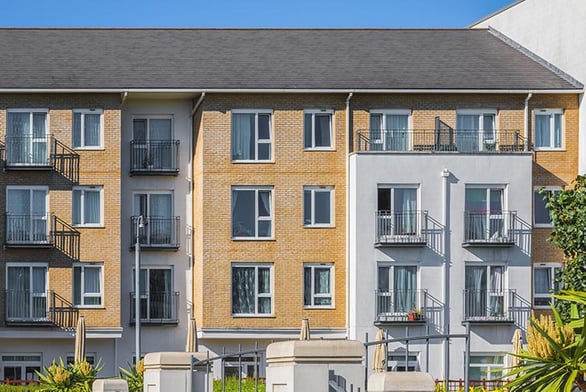
The IRS defines a Qualified Opportunity Zone (QOZ) as “an economically-distressed community where new investments, under certain conditions, may be eligible for preferential tax treatment.” Since its implementation as part of the Tax Cuts and Jobs Act of 2017, many of those “new investments” in the federally designated Opportunity Zones consist of real estate renovation or development.
As the goal of QOZ investments (through Qualified Opportunity Funds) is to promote job and other growth in lower-income communities, certain types of real estate seem to be a natural fit for this initiative. Office and retail properties go hand-in-hand with job creation. And apartments are also eligible in Qualified Opportunity Zones for funding and development. In fact, creating workforce and affordable housing should be an important part of economic development in lower-income areas, both within and outside of QOZs. This means apartments -- especially affordable apartments -- would be a perfect fit for the Opportunity Zone program, at least, in theory.
Assumptions and Actualities
The lack of affordable housing has been a problem, even before the coronavirus pandemic hit. Rising income inequality, combined with increasing housing costs, has led to financial burdens among working families. As far back as 2008, housing experts Bruce Katz and Margery Austin Turner pointed out in a Brookings Report that “lack of affordable housing hinders economic productivity and undermines the premise that full-time workers should be able to achieve a decent standard of living.” As such, the assumption here is that affordable housing can be a natural tie-in with a QOZ.
And, in many ways, the Opportunity Zone program has attracted more private capital, some of which has been directed toward affordable and workforce housing. The operative word here is “some.”
The actuality, or reality, is that with and without QOZ tax-deferral benefits, developers and lenders tend to shy away from much-needed workforce and affordable housing because rent levels don’t offer as high a return as market-rate projects. Additionally, interest and capital flowing into QOZs is pushing land and building prices. The more expensive it is to buy and build, the more developers and investors want projects with higher rents to cover the costs.
As a result, “. . . the program is often being used to produce higher-end apartments or developments, like industrial real estate, in communities that are largely able to access capital,” Urban Institute Senior Fellow Brett Theodos told the New York Times. So, while billions of dollars are making their way into Opportunity Zones, little of that investment is being used to develop new affordable housing.
There are, however, a few exceptions:
- Willkomen, a mixed-use development in a Cincinnati, OH QOZ, is using funds to develop a 163-unit apartment complex with a mix of affordable and market-rate apartments. Fifth Third Bank Community Development Corp.’s commitment of $7.2 million in QOZ capital is one of several forms of financing used to build that affordable housing.
- The under-construction Ox Fibre Apartments in Frederick, MD, is an adaptive reuse project that, when completed, will offer centrally located workforce housing to the Frederick community. The owners/developers are Broad Creek Capital and Equity Plus LLC.
- Parramore Oaks, a recently-completed complex in Orlando, FL, provides both affordable and workforce housing units in the lower-income Parramore Village. The first phase is completed; the second phase will offer all income-restricted units.
More, however, can and should be done when it comes to QOZs and affordable housing.
More Realistic Community Housing
In summary, the answer to the question of “are apartments eligible for qualified opportunity zones?” is an unqualified “yes.” Housing is an important aspect of economic renewal. While many apartment complexes and mixed-use projects are being developed within QOZs, some of these projects might be too expensive to house lower-income families.
Effective multi-family developments are those that align with the needs of QOZs. This means more affordable housing, along with additional job creation. Many developers have found a way to make affordable and workforce housing work in QOZs, whether through obtaining additional mezzanine debt, or combining QOF investments with other federal, state, and municipal tax incentives.
As such, while apartments could be considered an important part of the Opportunity Zone program, affordable apartments would go that much further in supporting the spirit of the initiative.
This material is for general information and educational purposes only. Information is based on data gathered from what we believe are reliable sources. It is not guaranteed as to accuracy, does not purport to be complete and is not intended to be used as a primary basis for investment decisions. It should also not be construed as advice, meeting the particular investment needs of any investor.
There is no guarantee that the investment objectives of any particular program will be achieved.
The actual amount and timing of distributions paid by programs is not guaranteed and may vary. There is no guarantee that investors will receive distributions or a return of their capital. These programs can give no assurance that they will be able to pay or maintain distributions, or that distributions will increase over time.



